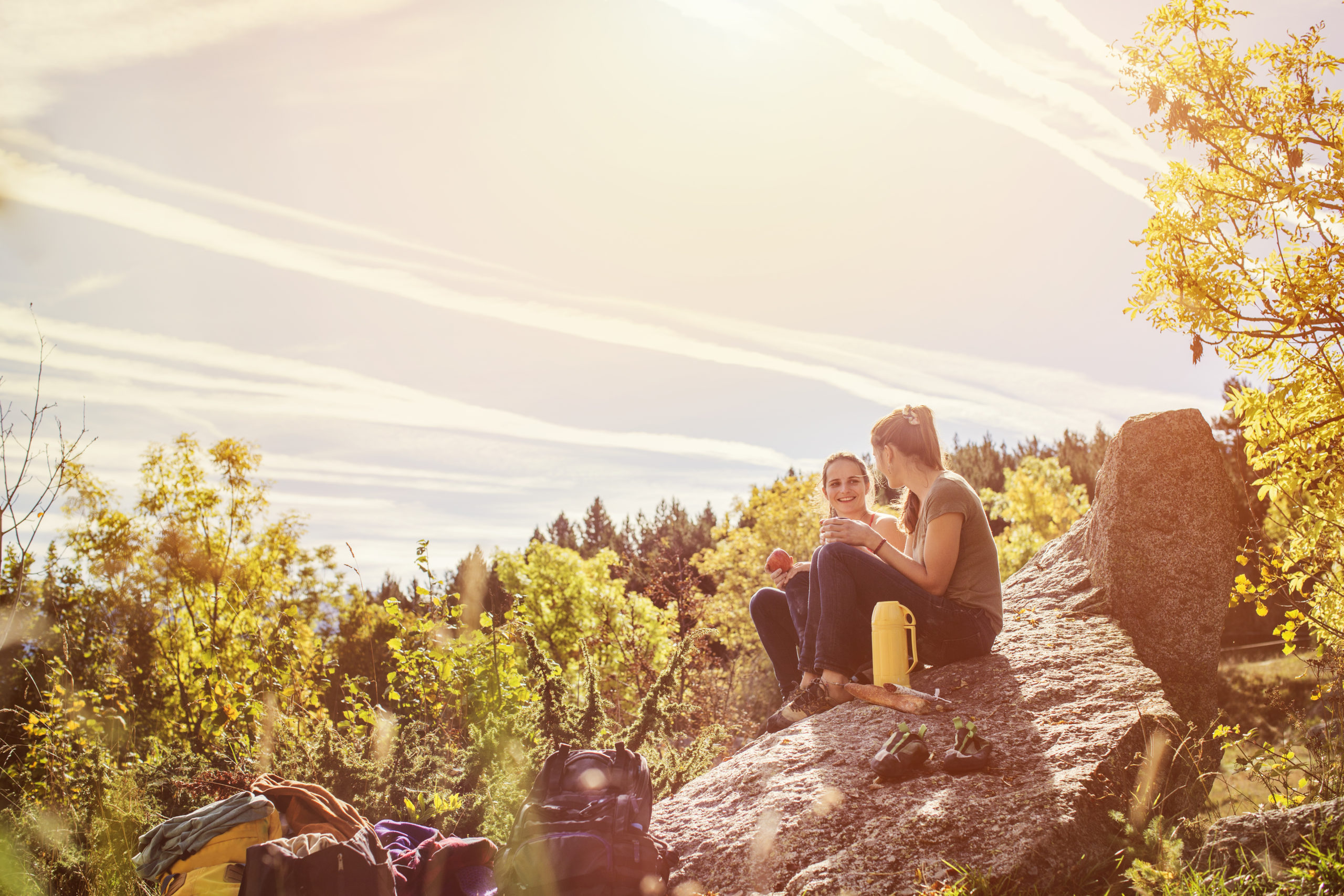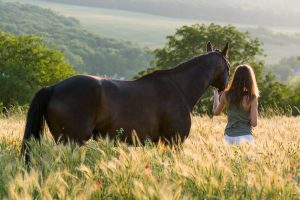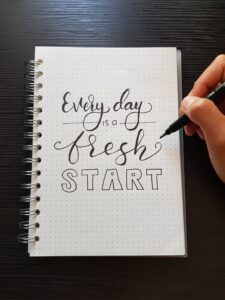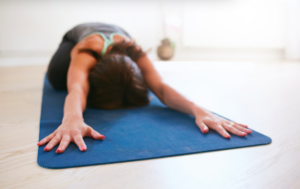
Since childhood, I’ve always been active, participating in just about every sport, including soccer, lacrosse, volleyball, baseball, and tennis. Many of my athletic experiences taught me about camaraderie and what it means to be a member of a team or a family. I learned about the value of staying active and being healthy so as not to let my teammates down when the game was on the line. I felt like I needed to be in tip-top condition so I could do my best for my team.
Toward the end of high school, my athletic focus became lacrosse. The team was like a clan; every person both on and off the field was in charge of one thing. There was a coach who led and mentored, and was respected; an assistant; and each player had their own niche. The goalie needed to be agile and flexible and willing to sacrifice to prevent a score. The attack needed to be quick, athletic and lean, with swift hands. Midfielders, my group, needed to be endurance athletes, ready to run end to end at any given point, ready to hit, take a hit and go for tough ground balls. And every person on the field fit into the mechanics of the game.
I thought I could go far in lacrosse. Maybe the sport could be my gateway to a cheaper education and my leg up in this world. My high school lacrosse team was going into its sixth game of the season. We were 4-1 and projected to beat our school rivals, but not by much. Rumor had it that scouts were at the game from Notre Dame and a few colleges in St. Louis. There may have been a few New England scouts as well. I was pumped and ready for the game of my life. We were up by three and in a good position to win with about eight minutes to go.
My coach took me out for a quick breather. Our rivals scored two quick goals in 90 seconds. Coach took me aside and gripped the facemask to my helmet and said, “Son, we need you to get a ground ball and control the offense. Can you do that for me?” I nodded and went in at the next break in play. Sure enough, I found myself running for a ground ball in our defensive end. I scooped it with my stick as coach wanted me to do to control the play. But at the same time, I took a defensive shaft to the ankle and before I knew it, my entire lacrosse career shattered before my eyes.
As a young lad, before my days of competitive sports, I also established a love for the outdoors. I found it more relaxing to sit in the shade of big spruce trees and watch the ants march up their branches than to sit on the couch and watch MTV, like many of my friends. While my friends learned about Nintendo and the nuances of the new age of the computer, my father, who resisted getting us cable TV, would take us on full-day hikes and overnight camping trips. He told us that he never had today’s kind of technology growing up and that his children would learn to appreciate the all-encompassing world.
 While trekking, Dad taught us about local animal tracks and flora and fauna. He shared his love for the woods and local trails. From him, my siblings and I learned how to use a pocketknife, how to set up a tent, and about the importance of reading a compass and map and knowing which direction to go in when lost. He taught us how to leave campsites cleaner than when we arrived at them. I too soon felt his love for the wild. He taught me to respect the land and that nature, in fact, can nurture.
While trekking, Dad taught us about local animal tracks and flora and fauna. He shared his love for the woods and local trails. From him, my siblings and I learned how to use a pocketknife, how to set up a tent, and about the importance of reading a compass and map and knowing which direction to go in when lost. He taught us how to leave campsites cleaner than when we arrived at them. I too soon felt his love for the wild. He taught me to respect the land and that nature, in fact, can nurture.
When one of my best friends tragically lost his life soon after high school, the woods became my place to heal and cope. I was still a bit down that I wouldn’t be able to play college lacrosse due to my ankle injury, but with my ankle better now, I became addicted to the trails. Perhaps I wasn’t as fast as I was when on the field, but I didn’t have to be. Life slowed down a bit. I had to stay focused on the terrain when hiking or jogging at a quick gait and be aware of my surroundings. Trail running was a whole new challenge that I started to enjoy. The forest became my place to be alone with my thoughts and it was a good “gym,” as I wasn’t able to afford a real gym membership that summer.
I remember running into the woods on that gray morning after hearing the tough news about my friend and how the tranquility of the forest sank into me. Standing among the tall trees, I felt comforted as the sudden sunrays poked through clouds permeating the canopy. I found peace in the muddy soil beneath my feet as my shoes sank deeper, the birds gliding overhead who could see all, the river slowly trickling so soft and poetic and gentle. My pain started flowing away with the ripples. I’d hiked and jogged the trails in these parts many times, but it was this specific moment when I realized that life had a deeper meaning. I stopped to feel the dew on the blades of the tall grasses and took a big inhalation of the morning air. I took off my running shoes and socks and dipped my barefoot toes into the creek and I stopped to touch a tree along the trail. It was a birch tree, white like computer paper with smudges of black ink. This birch had been here for quite some time. I had jogged by it before. It was thick, at least 50-60 years old, I’d guess. This tree’s roots got me thinking about how we humans are all connected somehow. I started to understand that life may have more value when you cherish the journeys and experiences you have along the way. Don’t try to get there, simply be here, in the moment. Humans mature like cyclical seasons. Looking back, this must have been my “Eureka” or “Aha” moment.
At that point in my life, I didn’t know what I wanted to do or study, now that I couldn’t be a college athlete. The idea of becoming a recreational counselor or health and fitness specialist never crossed my mind until I was introduced to Ellenhorn. I now realize that the hikes and outdoor experiences as well as the athletic and educational background I had were the stepping-stones that paved the way for a career dedicated to helping others. I knew I wanted to teach appreciation for the woods, as our society is moving more and more toward a sedentary lifestyle. Now that I’ve honed my skills as a recreational counselor and lead personal trainer, each day can involve connectedness, activity, discovery, discussion, exploration, curiosity, relationship-building and shared experiences.
QUEST Program at Ellenhorn
QUEST (Quality, Unique, Experiential, Supportive Treatment) is a unique component of Ellenhorn that helps clients stay physically and mentally active as they participate in a wide variety of excursions and form friendships in a natural setting. QUEST excursions can involve visiting a museum or mall, hiking in the forest, learning to kayak, growing vegetables on a working farm, grooming horses, rock-climbing at a gym and training gentle, affectionate dogs. QUESTers engage with the outside world in a positive way, discover the city’s treasures, and find strengths and interests within themselves that build self-confidence. On every excursion, staff is right at hand to help clients work through any issues that arise. People socialize in a comfortable, stress-free way during shared activities, while building skills and a feeling of competence and confidence.
When a client enters the Ellenhorn community, they meet with their team and complete the assessment process during which the team learns about the client and their goals for recovery. A prescription for psychotropic medicine often leads to unwanted weight gain. So along with the QUEST program, we offer personal training. Clients can team up for personal activity with a certified personal trainer and recreational counselor. Our counselors are there for support and guidance, and to help design personalized programs for each client. Recognizing that every person is unique, we take a person-centered, collaborative approach to personal training: client, trainer and team construct the perfect experiential program, with goals that offer the client a good chance of success. Some folks may want to use the gym in a conventional manner for strength or cardiovascular training, such as an elliptical ride, a jog on the treadmill, a weight-training circuit or a swim in the pool. Others may want to dance or take a martial arts class, while others may enjoy a walk in the neighborhood or shooting a few hoops out back. Yoga can also be extremely helpful; just ask my friend and colleague Dave how yoga has influenced his life.
A Little Bit About Experiential and Recreational Therapy
Developed in the 1970s, experiential therapy is a therapeutic approach that encourages clients to identify and address hidden or subconscious issues through activities such as role-playing, the use of props, guided imagery, and a range of other active experiences. The heart of the QUEST program is based on principles of experiential therapy, specifically that of recreational therapy.
According to the American Therapeutic Recreation Association: “Recreational therapy is a service used to restore, remediate and rehabilitate a person’s level of functioning and independence in life’s activities, to promote health and wellness as well as reduce or eliminate the activity limitations and restrictions to participation in life situations caused by an illness or disabling condition.”
Recreational therapy is a type of experiential therapy. Other types of experiential therapy are equine therapy, expressive arts therapy, music therapy, wilderness therapy, adventure therapy, and psychodrama. Many of these experiential therapies are offered at Ellenhorn.
Experiential therapy is an effective component of comprehensive treatment programs for people who are struggling with a range of issues and disorders. It has been successfully integrated into Ellenhorn’s treatment program and can be effective with clients being treated for substance abuse, addiction, behavior disorders, mood disorders, eating disorders, grief/loss, trauma, sex addiction, compulsive gambling, bipolar, depression and related conditions.
For a person dealing with trauma, instead of traditional physical therapy, a recreational counselor or therapist at Ellenhorn might use therapeutic horseback riding or gentle stretching. And instead of traditional psychological counseling, we might pinpoint rock climbing or team sports as an outlet. Taking an experiential approach at Ellenhorn, we help clients achieve health and wellness in an interactive way, building on our clients’ strengths and interests to help them achieve their goals and stay on track toward recovery.
Now with the coming of spring in New England, it’s the perfect time to get back outside. This winter was nowhere near as bad as it could have been. But even with the few snowy and cold days, the QUESTers at Ellenhorn got out to check out local ice rinks, sledding hills, the ski slope, historical museums and the indoor climbing gym. As stalks and buds begin to peep up from the soil this April, and as colorful petals begin to open, the participants in QUEST will also respond to nature’s cycle, as many of our adventures move again to the great outdoors.
In some Native American cultures, it is said that moving around the directions of the compass — north, east, south and west — reflects the great wheel of life and the substance of experience in which the soul engages is the journey of life, love and discovery. Native to the New England region, the Algonkians sought the guidance of nature spirits who would share with them how to live in harmony and peace with each other and the natural world. Some members of the tribe would seek spiritual insights through vision quests during rites of passage into adulthood. Just like our calendar cycles, our true nature lies in the center, which is formless, pure potential, completely free of any defining qualities and yet simultaneously capable of assuming various dimensions. In winter, we touch on elements of trust, wisdom and acceptance. As the snow melts and spring arrives, we now move to a focus of balance, growth, fertility and renewal.
So let’s open up the windows and get off the couch! The green on the trees is symbolic of rebirth. In order to grow, like the flower, we humans must push our limits. The active roadmap to recovery that Ellenhorn clients build collaboratively allows an opportunity to take the scenic route and gives a chance for reflection and appreciation of the present moment. Clients have a chance to stop and smell the roses as they explore, experience and heal. Like water, sometimes humans need to operate at a trickle, taking the world in with open arms and compassion, but at other times humans need to crash like waves on the rocky shore. This spring we will experience how life is about being in balance. The trickle and the crash, the ying and the yang, the mountain and the ocean.
On one of our weekly QUEST e xcursions, we visit the Cultivate Counseling Center at John Sawyer’s Mill in Bolton, MA. There, clients participate in an experiential farm-based wellness program. We interact with farm animals, test our green thumbs in the garden, explore equine therapies in the stables and help out with the myriad things that need to get done on a working farm. Clients literally and figuratively heal and grow. In fact, hands-on experience has the power to help all of us heal and grow.
xcursions, we visit the Cultivate Counseling Center at John Sawyer’s Mill in Bolton, MA. There, clients participate in an experiential farm-based wellness program. We interact with farm animals, test our green thumbs in the garden, explore equine therapies in the stables and help out with the myriad things that need to get done on a working farm. Clients literally and figuratively heal and grow. In fact, hands-on experience has the power to help all of us heal and grow.
In my own recreational therapy practice, I’ve begun using elements of Shinrin Yoku, a Japanese term translated as forest bathing. This mindfulness-based stress reduction practice is designed to enhance sensory awareness. You take a walk in the woods and simply connect with the moment and feelings that may arise when you are immersed in nature. It’s important to leave your phone behind, as we all know how much distraction handheld devices create nowadays. As a new member of the Association of Nature and Forest Therapy, my goal is for clients to experience firsthand the healing power of Mother Nature as she has helped me so much in my times of need.
It is time to plan the next big adventure. Whether your goal is to finish the Boston Marathon, to start being a bit more present throughout the day, or to simply start moving a bit more outdoors, my hope for you, reader, is that your QUEST be enlightening and ever so fruitful.
Benefits of Exercise and Outdoor Activity in the Mental Health Community
Exercise can help prevent excess weight gain or help maintain weight loss. When you engage in physical activity, you burn calories. The more intense the activity, the more calories you burn. Regular trips to the gym are great, but don’t worry if you can’t find a large chunk of time to exercise every day. To reap the benefits of exercise, just get more active throughout your day — take the stairs instead of the elevator, take the dog for a nice long stroll or rev up your household chores. We find being consistent is the key.
Worried about heart disease? Hoping to prevent high blood pressure? No matter what your current weight, being active boosts high-density lipoprotein (HDL), or “good,” cholesterol and decreases unhealthy triglycerides. This one-two combo keeps your blood flowing smoothly, which decreases your risk of cardiovascular diseases.
 Exercise will improve your mood. Need an emotional lift? Or need to blow off steam after a stressful day or therapy session? Time at the gym or a brisk 30-minute walk can help. Physical activity stimulates various brain chemicals that may leave you feeling happier and more relaxed. You may also feel better about your appearance and yourself when you exercise regularly, and that can boost your confidence and improve your self-esteem.
Exercise will improve your mood. Need an emotional lift? Or need to blow off steam after a stressful day or therapy session? Time at the gym or a brisk 30-minute walk can help. Physical activity stimulates various brain chemicals that may leave you feeling happier and more relaxed. You may also feel better about your appearance and yourself when you exercise regularly, and that can boost your confidence and improve your self-esteem.
Regular exercise helps prevent or manage a wide range of health problems and concerns, including depression, stroke, metabolic syndrome, type 2 diabetes, a number of types of cancer, and arthritis.
Regular physical activity can improve your muscle strength and boost your endurance. Exercise delivers oxygen and nutrients to your tissues and helps your cardiovascular system work more efficiently. And when your heart and lung health improve, you have more energy to tackle daily chores.
Increasing your exercise can help you count fewer sheep during the night. Regular physical activity is proven to help you fall asleep faster and deepen your sleep.
Exercise and physical activity can be enjoyable. They give you a chance to unwind, enjoy the outdoors or simply engage in activities that make you happy. Physical activity can also help you connect with family or friends in a fun social setting. So, take a dance class, hit the hiking trails, join a soccer team or come out to QUEST! Find a physical activity you enjoy, and as our QUEST program motto suggests, just go!
The Bottom Line on Exercise and Activity
Exercise and physical activity are a great way to feel better, boost your health and wellness and have fun. Aim for at least 150 minutes per week of moderate-intensity exercise, or 175 minutes per week of vigorous exercise if you want to push a bit harder. Try to squeeze in strength training at least twice per week by lifting free weights, using weight machines or doing body weight exercises. Light resistance bands are great for home workouts and they’re cheap too.
Space out your activities throughout the week. If you want to lose weight or meet specific fitness goals, you may need to ramp up your exercise efforts. Remember to check with your trainer and doctor before starting a new exercise program, especially if you haven’t exercised for a long time, have chronic health problems, such as heart disease, diabetes or arthritis, or have any other concerns.
Here are a few introductory videos about the practice of forest bathing or Shinrin Yoku, which has become very popular in Eastern medicine. Check it out.


